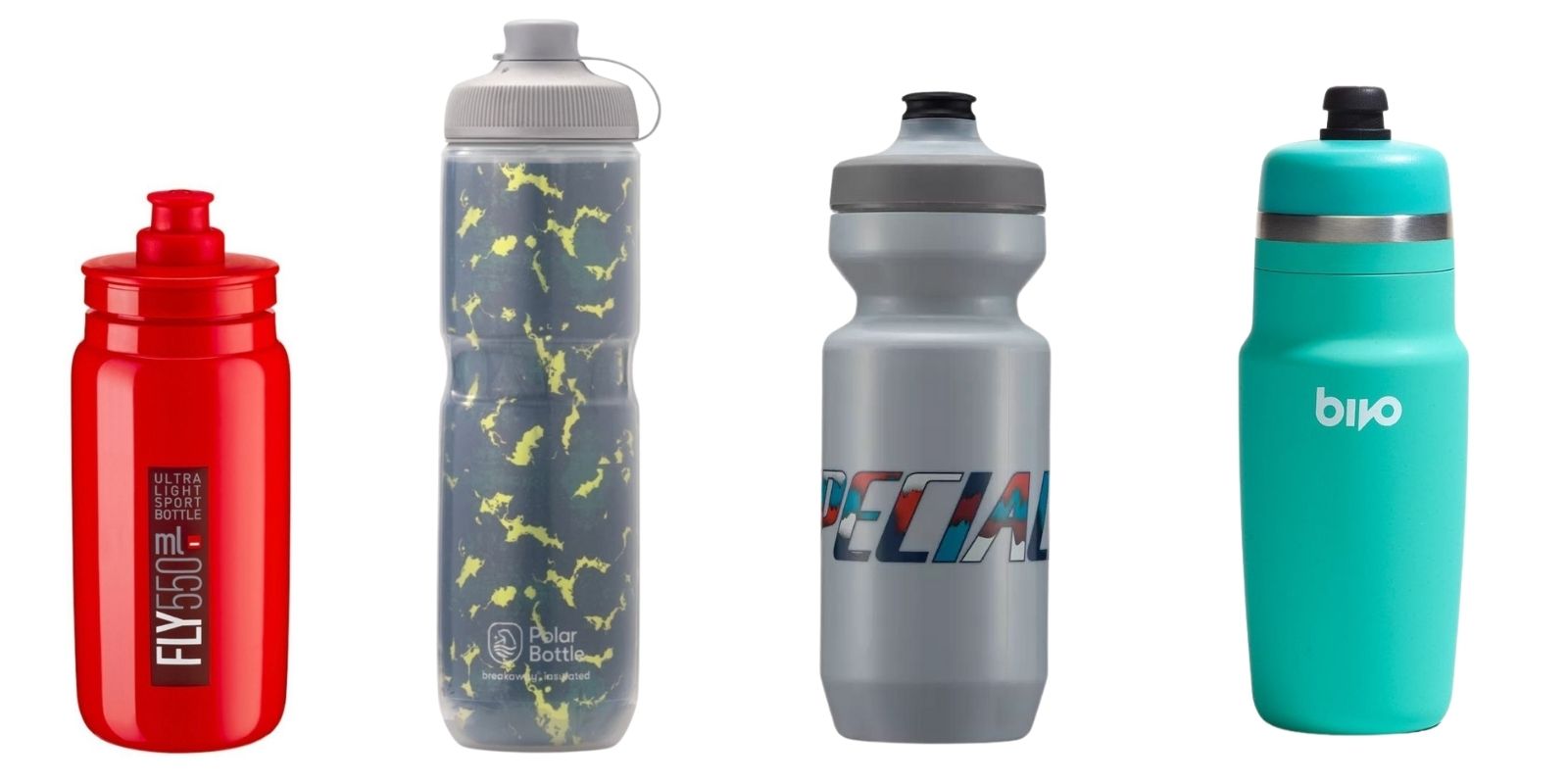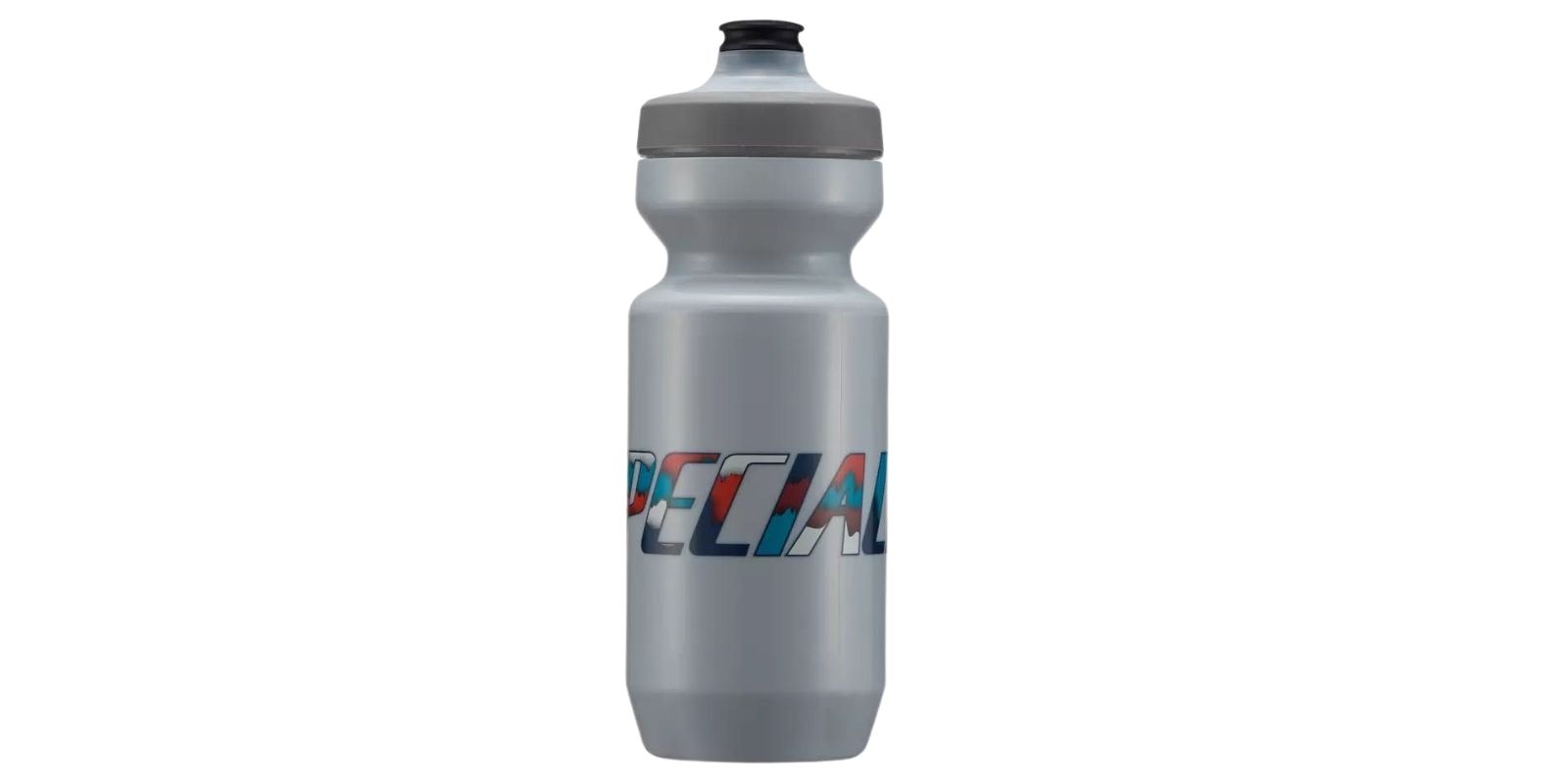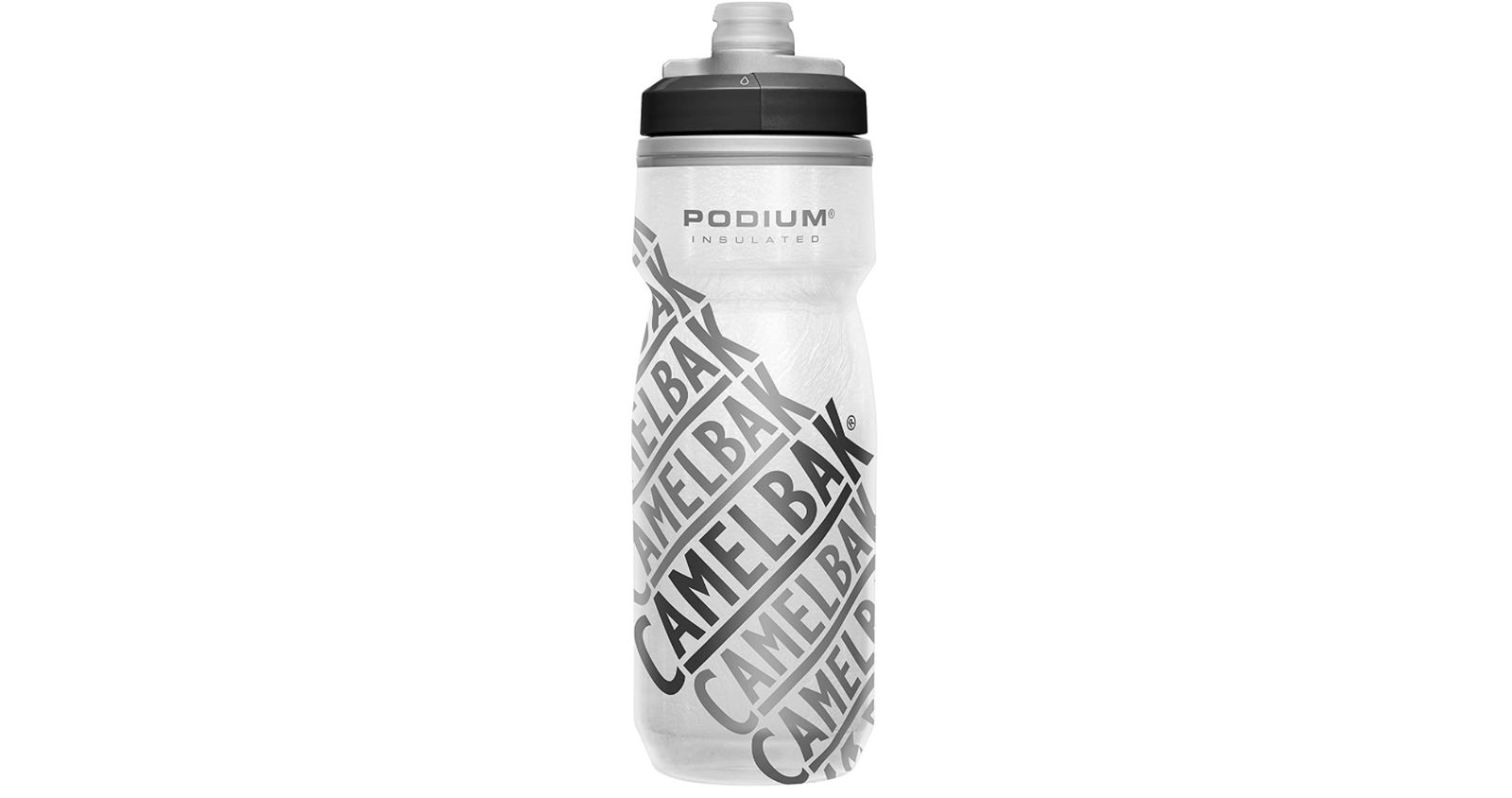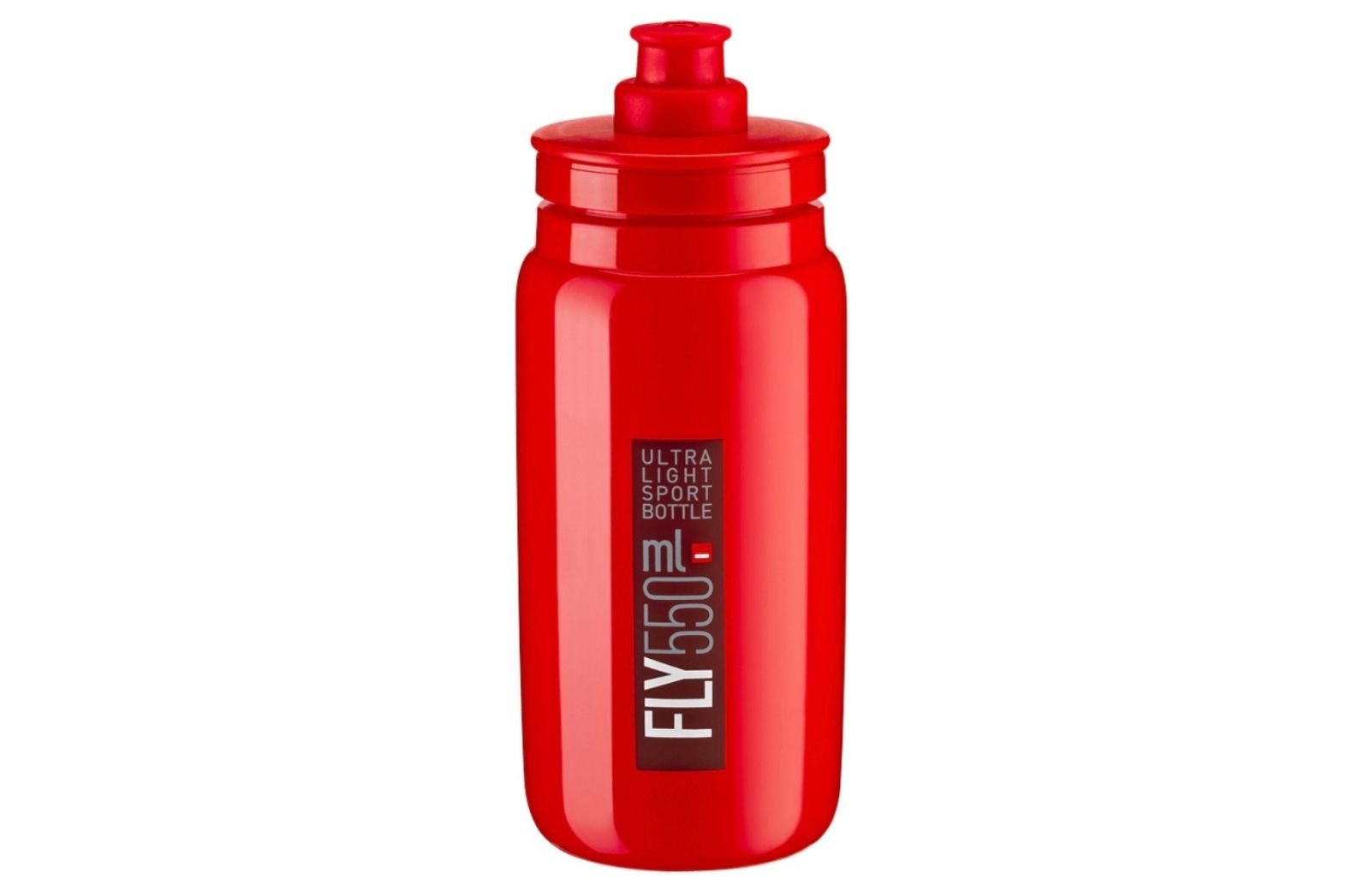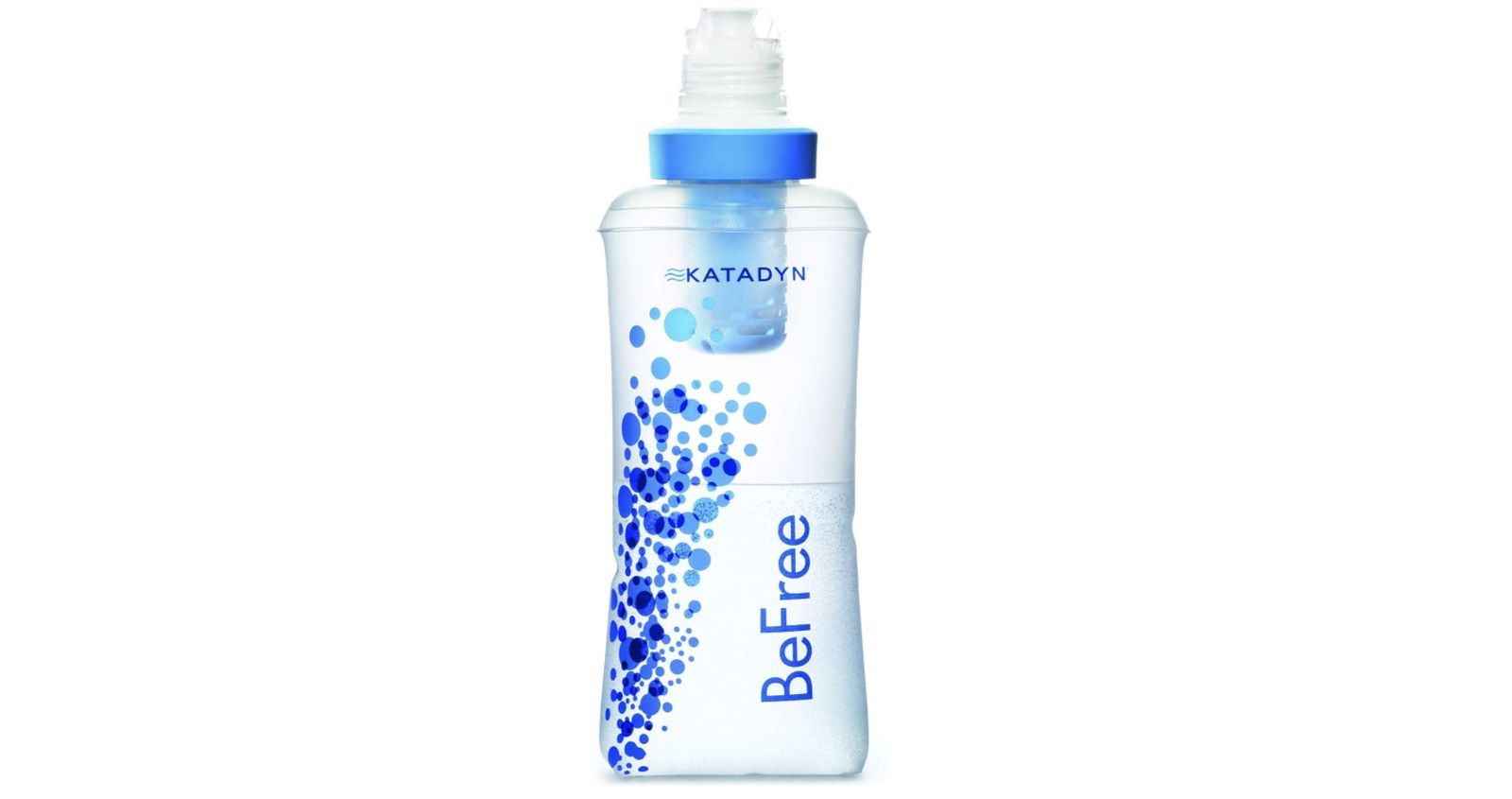Choosing the best cycling water bottle may not seem like a big deal: All water bottles are created equal, right? Well, not entirely.
In fact, in cycling, you’re asking a lot of your bottle. It needs to fit nicely in your bottle cage, not jiggle when you ride, be easy to sip from, be resilient despite constant use, and ideally, keep your water cold on hot days. Here, we’re looking at a few of our top cycling water bottle picks, and what makes them great…
BEST OVERALL WATER BOTTLE: Polar Breakaway Muck Insulated
For hot days, you can’t beat Polar bottles. They are well-insulated to keep water cold for hours in the heat, easy to clean for those who use a sports drinks or ride in dusty conditions. Polar’s Surge Cap disassembles easily, so you can truly clean the cap between uses. And unlike cheaper bottles, these are dishwasher safe and won’t get warped in a single wash.
We really appreciate that they have an easy-to-use optional cap that is easy to get on and off with one hand while riding, which is perfect for muddy or dusty rides. They’re also extremely easy to squeeze and control the water flow. And they come in 12-, 20-, and 24-ounce options—we love the 12-ounce option for kiddie bikes and lunchboxes!
- Material: BPA-free Plastic
- Volume: 12, 20 and 24 ounces
- Weight: 4.9 ounces for 20-ounce bottle
- MSRP: $14
PROS: Basically perfect, keeps dirt out of your mouth on offroad adventures
CONS: None, really
BEST TASTING: Specialized Purist WaterGate Water Bottle
If you’ve ever gotten a custom bottle from a club or shop (and actually wanted to use it), chances are it’s a Specialized Purist bottle. Not only are they a high-quality, easy-to-use bottle that will last for years, but they don’t have that plasticky taste that many cheaper bottles have.
That’s because the Purist WaterGate Bottle uses an amorphous silicon dioxide coating infused into the inner wall of the bottle, forming a glass-like finish that keeps your water tasting fresh. It also helps keep the bottle clean, as it helps keep dyes from coloring the plastic.
The simple valve is easy to drink from and easy to close. Even after many uses, it still seals perfectly and allows the user to mix up protein shakes and sports drinks without worrying about water getting everywhere. If you want your water chilled, upgrade to the insulated version.
- Material: BPA-Free plastic
- Volume: 22 and 26 ounces
- Weight: 2.8 ounces for 22-ounce bottle
- MSRP: $10 ($18 for insulated version)
PROS: Water tastes great
CONS: None, really
BEST ORIGINAL: CamelBak Podium Chill Insulated Water Bottle
We have a bit of a love-hate relationship with the Camelbak Podium Chill bottles. They basically invented the premium water bottle category, but every iteration has become a bit stiffer and harder to clean. Here’s the pros and cons of that:
First, they’re commonly available at many shops, REI, etc, so if you forgot your bottle, chances are any shop will stock these. It will last for years with no issues, and thanks to double-walled insulation, it keeps drinks colder a little longer than the rest. The downside to that rigid durability is that it’s substantially harder to squeeze than the other bottles listed here. Kids and those with smaller hands may struggle to squeeze it single-handed.
It’s twist-lock valve makes it the least likely to leak of any bottle here, but that feature comes at the expensive of an overly convoluted valve design that’s difficult to fully disassemble and clean…and trust us, you’ll want to clean it periodically because it will get funky in those nooks and crannies.
- Material: BPA-Free Plastic
- Volume: 21 ounces (also available in 24 ounces)
- Weight: 3.53 ounces
- MSRP: $14 ($16 for 24-ounce)
PROS: Keeps water chilly, won’t leak
CONS: Harder to squeeze, much harder to clean
BEST FOR WEIGHT WEENIES: Fly Elite
Elite makes a great lightweight bottle that weighs in at just 1.9 ounces, making it the lightest on this list by a wide margin. Also critical for racers: The cap is super easy to open and close with your teeth, and it’s by far the easiest to squeeze thanks to the thinner sidewalls in the middle of the bottle.
Not only is this great for smaller, weaker hands (think: kids), it’s also a safety feature – if you drop it while riding in a peloton, the bottle will simply crush if someone runs over it, making it much less likely to cause an accident.
At only only $8, it’s the least expensive bottle on this list, yet it’ll hold up to regular abuse…and even the dishwasher. And if you’re more into gravel riding or other muddy racing, you can add an optional cap over the valve to protect it from the dirt during rides. Bonus points for having a wide variety of colors to match any team kit.
- Material: BPA-Free Plastic
- Volume: 21 ounces
- Weight: 1.9 ounces
- MSRP: $8
PROS: Ultra-lightweight, easy to squeeze
CONS: No insulated option
BEST ECO-FRIENDLY BOTTLE: Bivo One
If you want a bottle that will last for years, look hip as hell, and is eco-friendly, the Bivo One is the bottle of your dreams. This stainless steel cycling-specific water bottle is unique, but despite its unexpected design—all matte steel with a silicone nozzle—it functions almost exactly like a regular plastic bottle. Bivo is a carbon neutral company, so in addition to using less plastic, you’re also supporting a more sustainable cycling company.
It might take some getting used to, and it’s not ideal for racing situations. You can’t squeeze the bottle, obviously, so you need to tilt it back to drink. And of course, it’s much heavier than a lightweight plastic bottle. But for endurance riders, bikepackers, stylish commuters who bring bottles into the office, or cyclists who prefer to use less plastic, the Bivo One is a gorgeous upgrade.
- Material: Stainless steel
- Volume: 21 ounces
- Weight: 5.9 ounces
- MSRP: $29
PROS: Eco-friendly, looks great
CONS: Pricery, heavy, best for casual rides
BEST BOTTLE FOR BIKE COMMUTERS: Hydroflask
You definitely would not use a Hydroflask on a road ride or in a racing situation, but if you’re a commuter who wants a bottle that can go from bottle cage to backpack to desk and look sleek, plus hold hot or cold beverages, the 21-ounce Hydroflask is an ideal option.
Summertime bikepackers will appreciate the fact that this bottle is insulated and can keep beverages cold for 24 hours. Fat bikers might love the fact that they can use it on the trail for coffee for 12 hours. Note that you can buy a different lid that allows for easier in-ride drinking, but travel with both lids if you’re tossing it in your backpack in order to avoid spills.
- Material: Stainless steel
- Volume: 21 ounces
- Weight: 11.3 ounces
- MSRP: $33
PROS: Keeps drinks hot or cold all day long
CONS: Can’t easily drink while riding, heavy
BEST EXTRA BOTTLE FOR BIKEPACKERS: Katadyn BeFree 0.6L Water Filter
The soft flask with a lid that doesn’t just make sipping easy, it makes it safe too. The Katadyn BeFree bottle isn’t going to fit on your bike, but it can cram in your back pocket if you’re doing a long ride in an area where you may not have access to clean water fill-ups along the route.
It’s ideal for bikepackers, gravel riders, and mountain bikers who need that extra ability to quickly and easily filter water as they go, especially in areas where you’re unsure of water accessibility…or quality. You don’t need to add tabs or use a hefty filter, since the filter is built into the lid. And if you want to, you can slowly squeeze water out through the filter to refill your regular water bottles.
- Material: Plastic
- Volume: .6 liters
- Weight: 3.2 ounces
- MSRP: $40
PROS: Filters questionable water, easy to stuff into pocket or bar bag
CONS: Won’t fit in bottle cage
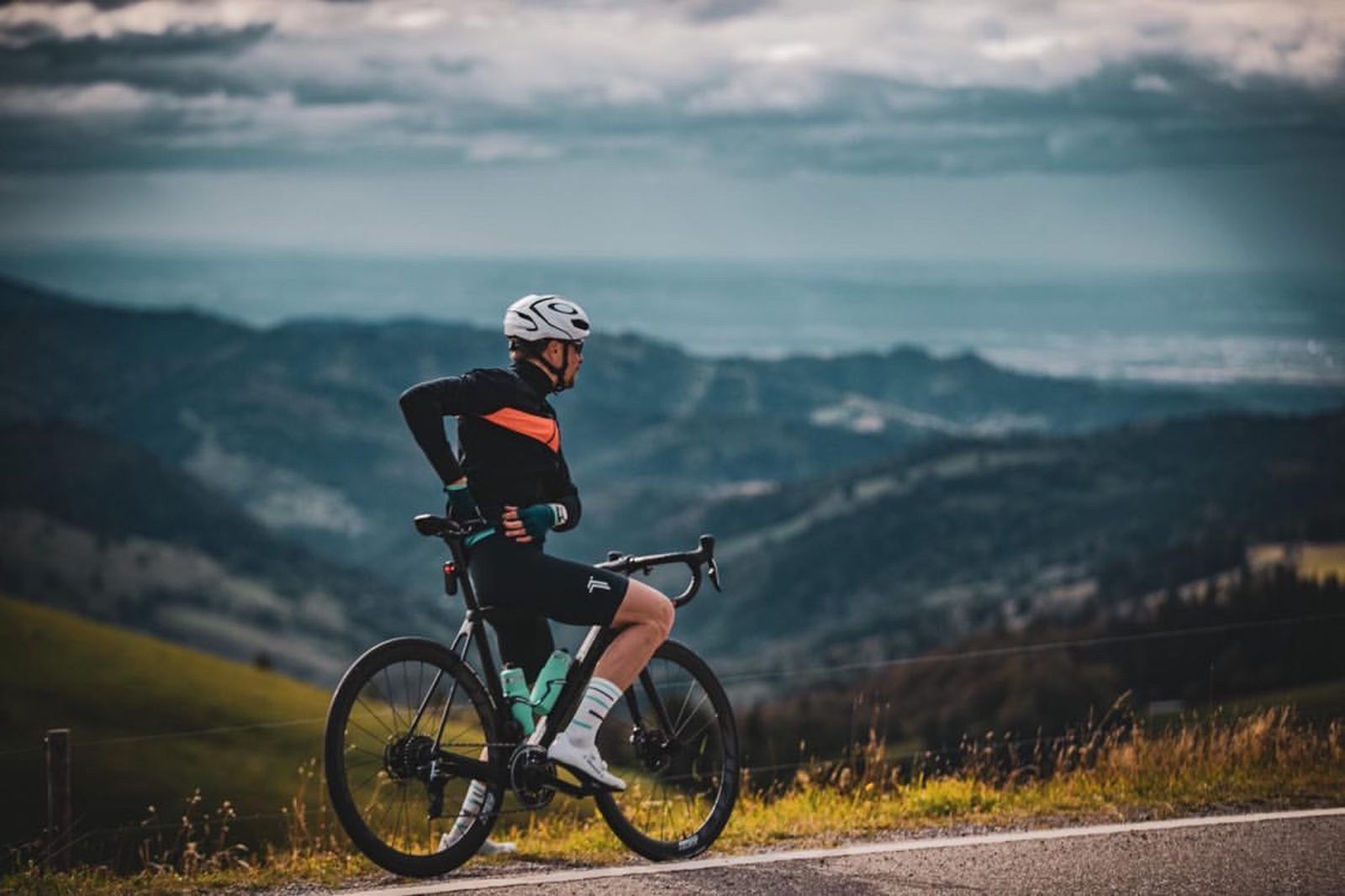
Buyer’s Guide for Cycling Water Bottles
Here’s what we consider when we shop for cycling water bottles:
Volume: There are pros and cons to bigger volume bottles. Most water bottles come in 20-21 ounce sizes, with 24-ounce ‘big bottle’ options available. The 20-ounce bottles are great if you’re concerned about weight, but for most riders, the 24-ounce bottles are the better value since you can simply opt to not fill them all the way if you’re doing a short weight-conscious ride.
Price: Don’t cheap out on bottles. The cheapest bottle we have on this list is still $8, because typically, bottles that are cheaper than that will warp in the dishwasher, have a funky taste, leak, or just wear out quickly. If you get a bottle for free from a shop, event, or team, great—but don’t waste your money on super-cheap ones from big box department stores.
Ease of drinking: Check the lid. The original caps with the small valve are less appealing these days, thanks to better ergonomic design that makes for easier sipping. Some bottles will come with a locking feature on the valve, which is great if you tend to toss a bottle into a duffle bag on your way to the group ride. All the bottles on this list are extremely easy to drink from!
Squeezability: For some, this is important. Bottles don’t need to have great ‘squeezability’ to function, since you can always just tilt your head and the bottle slightly back in order to drink, but for those who want to quickly get a lot of water into their mouth without taking their eyes off the road, a bottle that squeezes easily is key.
Ease of cleaning: A bottle that’s dishwasher safe and has very few nooks and crannies is critical if you’re a regular rider. Bottles are prone to collecting mold over time, so make sure that the one you get is easy to clean.
What else are you using it for? The last question to ask is about bottle usage. In this roundup, we included a couple of non-traditional options like the Hydroflask and the Katadyn bottles because not everyone needs a cycling-specific water bottle. Commuters may prefer to bring coffee in a Hydroflask into work, while mountain bikers might love having a Katadyn on hand for emergency filtration situations.
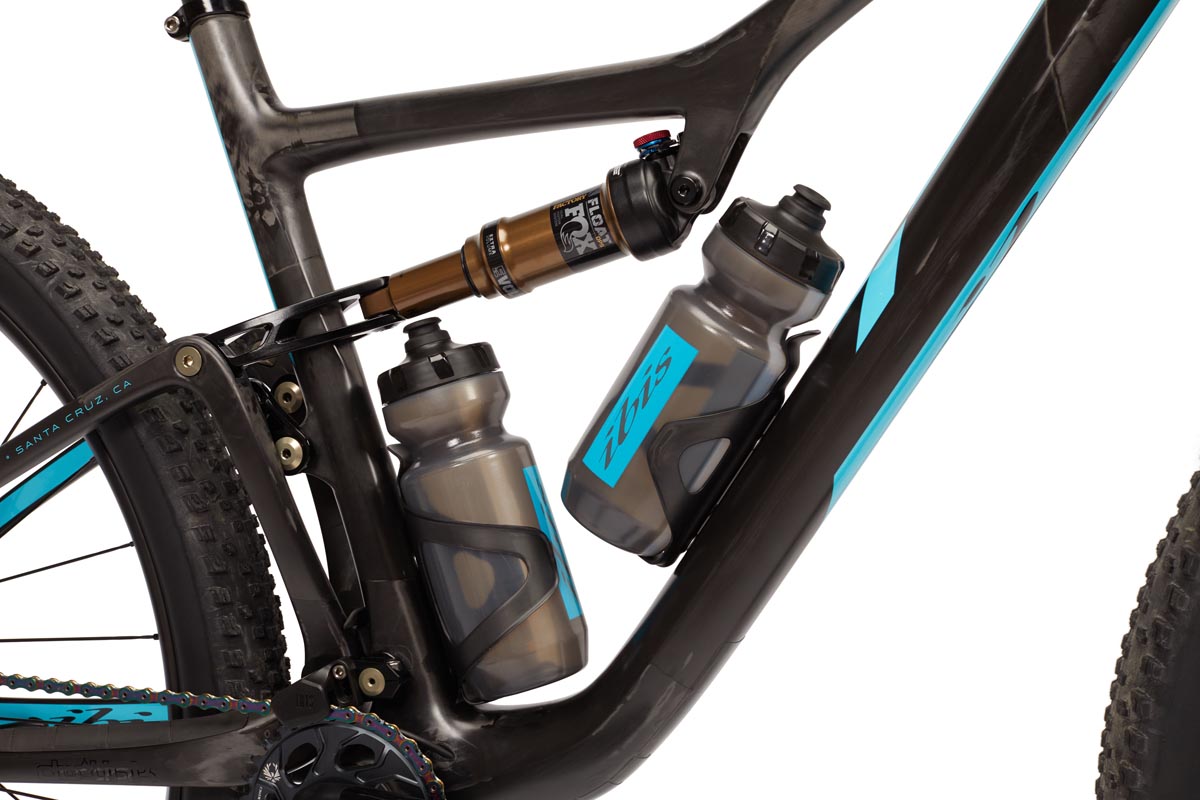
Frequently Asked Questions About Cycling Water Bottles
How do I clean cycling water bottles?
Look for bottle options that are dishwasher safe to save yourself time. But avoid ultra-hot or sanitation cycles, as the high temps can cause warping. If you’re washing by hand, make sure you let the bottles soak in warm soapy water for several minutes before thoroughly cleaning them with a baby bottle brush to get into nooks and crannies, especially if you use sports drinks in the bottles.
For the lids, the same rules apply, and if you can disassemble them, do so on a regular basis and thoroughly clean them. You may want to use a pipe cleaner-style brush (like you get with stainless steel straws) to get into the small parts of a valve, where bacteria and mold can flourish.
That said, be gentle. CamelBak cautions users that “you should also avoid forcing brushes or cleaning tools through the slits in the drinking nozzle—you could end up with a damaged, leaky cap.”
Can I put hot beverages in a cycling water bottle?
We don’t recommend putting hot water into your water bottles unless they’re designed for that—like Hydro Flasks are. Even putting hot drinks in a stainless steel one like the single-walled Bivo can be a bad idea, since you will burn your hand!
How do I keep water cold in my bottle?
We don’t recommend freezing your bottles with water in them, as that can cause some bottles to expand slightly and change their shape, or even crack. Instead, pack them with ice cubes and water on the morning of your hot ride. An insulated bottle plus ice should keep you cool for hours. You can even make sports drink ice cubes in a tray to avoid diluting your drink as the ice melts!
